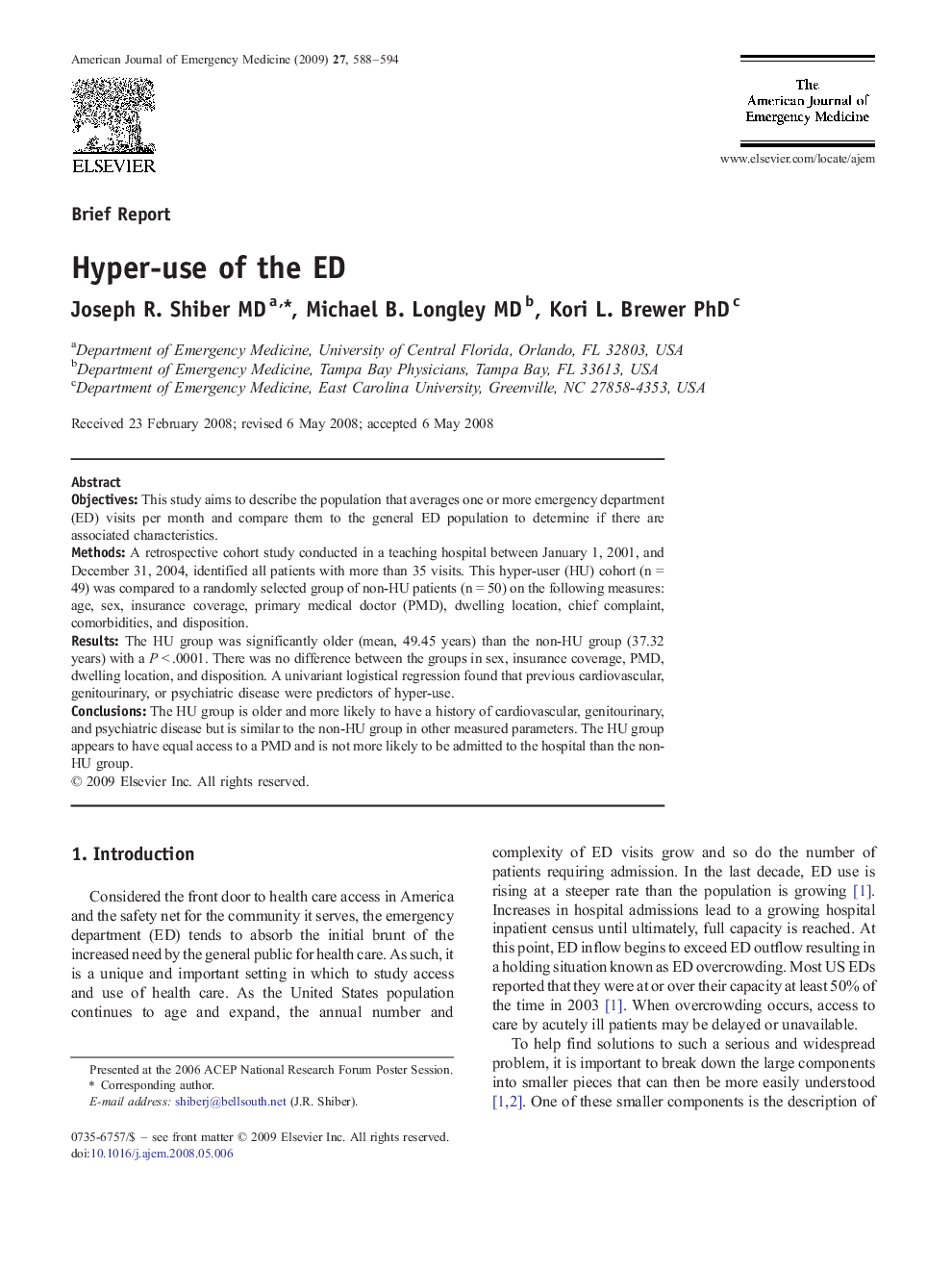| Article ID | Journal | Published Year | Pages | File Type |
|---|---|---|---|---|
| 3226977 | The American Journal of Emergency Medicine | 2009 | 7 Pages |
ObjectivesThis study aims to describe the population that averages one or more emergency department (ED) visits per month and compare them to the general ED population to determine if there are associated characteristics.MethodsA retrospective cohort study conducted in a teaching hospital between January 1, 2001, and December 31, 2004, identified all patients with more than 35 visits. This hyper-user (HU) cohort (n = 49) was compared to a randomly selected group of non-HU patients (n = 50) on the following measures: age, sex, insurance coverage, primary medical doctor (PMD), dwelling location, chief complaint, comorbidities, and disposition.ResultsThe HU group was significantly older (mean, 49.45 years) than the non-HU group (37.32 years) with a P < .0001. There was no difference between the groups in sex, insurance coverage, PMD, dwelling location, and disposition. A univariant logistical regression found that previous cardiovascular, genitourinary, or psychiatric disease were predictors of hyper-use.ConclusionsThe HU group is older and more likely to have a history of cardiovascular, genitourinary, and psychiatric disease but is similar to the non-HU group in other measured parameters. The HU group appears to have equal access to a PMD and is not more likely to be admitted to the hospital than the non-HU group.
